PSS- stereo mod : mod PCB integrated in a PSS-F30 & Flash DUMP
By lionel nollet on Tuesday, November 15 2022, 10:14 - Permalink
I recently bought a second-hand PSS-F30 in order to integrate my stereo mod PCB and confirm it is also valid for other keyboards of the PSS- series.
This time, I made the integration a bit easier because I did not use 1.27mm headers. I directly soldered some wires. I also just wired the missing DACR+/DACR- channel
Only two caps (C601 and C602) are removed from the PSS-F30 PCB.
Thin 5cm long wires are used for the audio signals, and thicker 8cm wires are used for power supply. Wires are twisted, once glued.
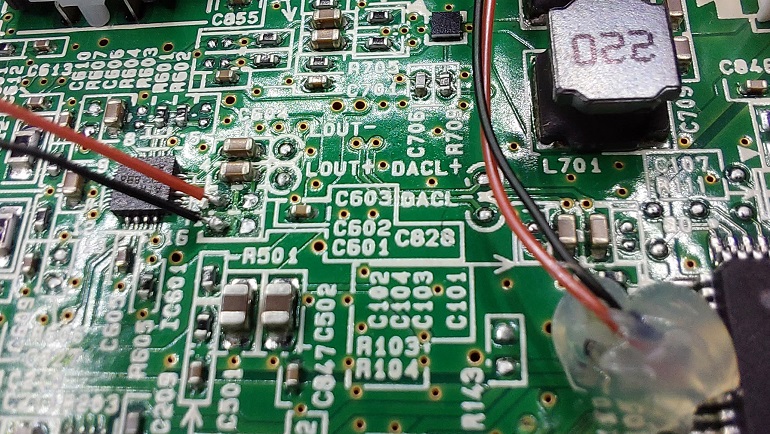
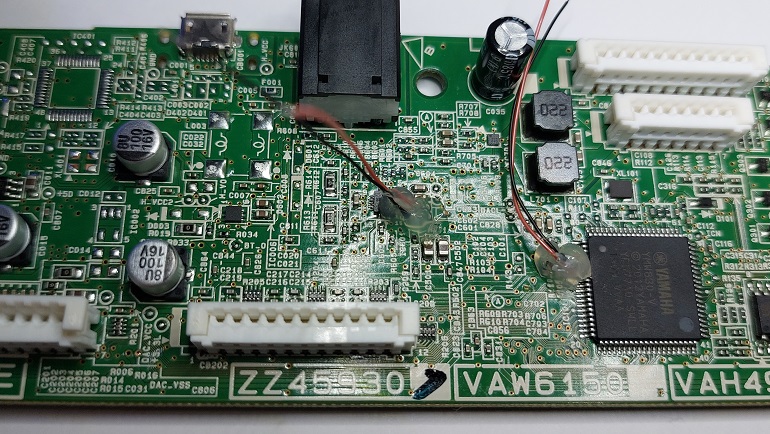
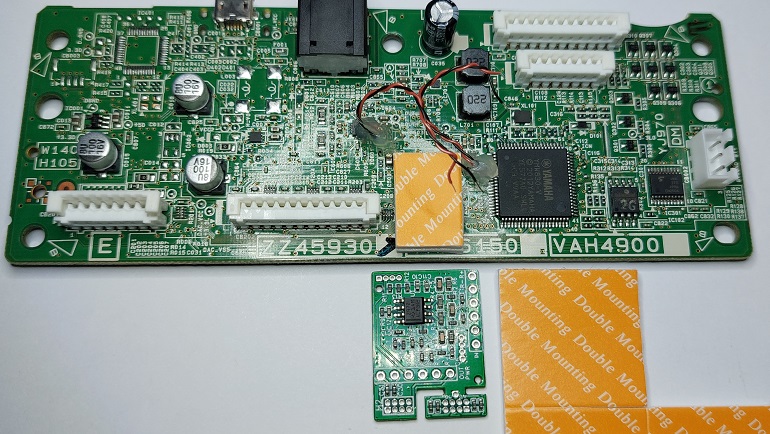
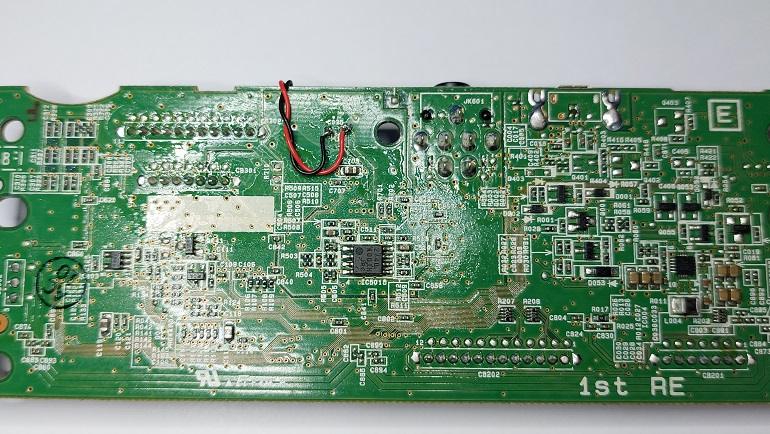
My mod PCB is put in place on the main PCB using (two pieces, one on the other) thick double-sided tape
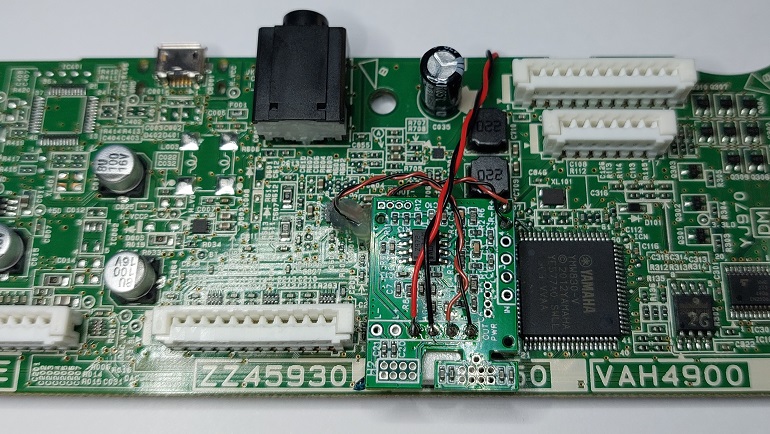
I'll post the pics later a video with the stereo audio
Now, the PSS-F30 also sounds stereo ! For some sounds (as for the PSS-A50) it's not so remarquable, but for others, it's really pleasant
I expected that the (many) rythms/styles integrated in this PSS- variant would sound much more beautiful, but in fact it's not so outstanding (but sounds better anyway)
Since I also bought this PSS-F30 for experimentations, I desoldered the SPI QUAD Flash memory in order to get a DUMP of its content and have a look on "what's inside", if anything remarkable
I also plan to do the same with the PSS-A50 Flash memory in order to compare them and maybe -replace some voices- or use voices from PSS-F30 on PSS-A50 ?
I'm not sure that someone ever performed a DUMP of the flash for this/these instrument(s), so maybe "I'm the first" !
For copyright reasons, I won't share the content, but you'll get the information about how I proceed
In order to make easier the removal/plug/modifications on the Flash, I mounted it on a 1.27mm male header (modified), and plugged on a 1.27mm female header soldered on the PSS-F30 PCB.
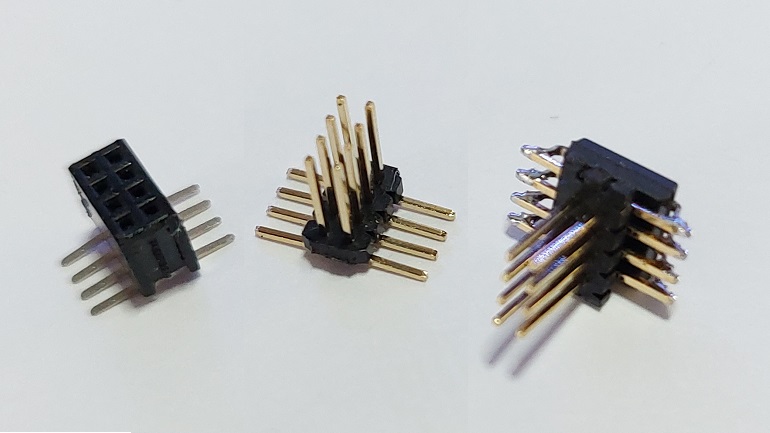
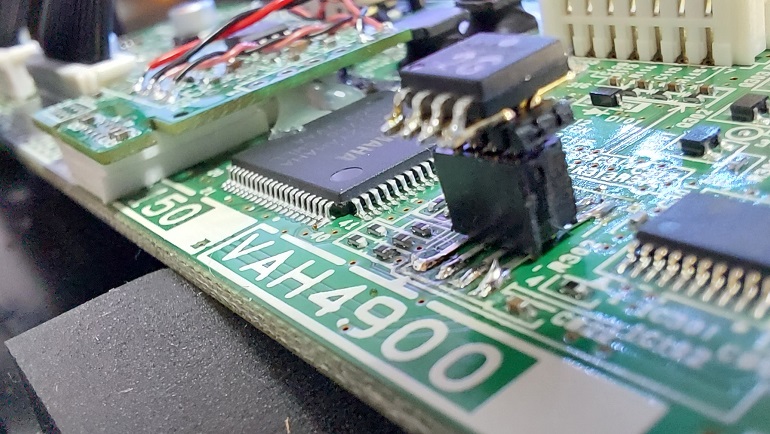
Currently, it's not so clear for me about the architecture, especially if there is part of the SW in the YMW830-V Processor (it has a JTAG, so most probably a code memory). Most propbably, there could be a bootloader in the YMW830 (maybe the same for all PSS-series). Nothing happens if we turn the PSS- ON (while the Flash is not connected).
It looks strange because it's not possible to enter in a "test mode" (explained in the Service Manual), and this test mode is supposed to help to identify (error code) if the Flash is not connected. Anyway.
I'll also identify where the non-volatile data is saved (volume setting for example) inside YMW830 or in the external Flash Memory. Just needed to perform a DUMP with the default settings, and another DUMP with the value changed. If nothing changes in the external Flash, it means that the data is stored in the processor.
I'll do the same with the PSS-A50 in order to try to locate the value (if any for the PSS-F30) that could be used to define the "Touch sensitivity" : Currently, the PSS-F30 HW doesn't implement dynamic touch. The chance is that the keyboard PCB and the rubber keys/contact is nearly the same as the one of the PSS-A50 : dual keys (press and release) are present. Just, a diode is missing for each key. Also, just one wire is also missing between the Keyboard PCB and the MainBoard PCB. So maybe, it might be possible to active a dynamic touch in the PSS-F30, if the SW implements the function and if it can be activated dynamically by changing a value in the memory.
I also noticed that the midi messages are sent out on the Tx pin of the YMW830, and that could help to implement a wire(less BT) midi to record what you play !
Talking about midi, I could easily extract (from the flash DUMP) the midi files for the 30 songs stored in the PSS-F30. I did it for the first song. In the DUMP, the songs are stored exactly like any .mid file on your PC.
To be continued...
Comments
I would love to see a continuation for your projects, the A50 is a very popular keyboard and I think you could make some money selling your mod! Anyway, I love the dedication you have put into this, It was a pleasure reading you.
If you ever sell the mod or the gerber files, please contact me! Thanks!
Thanks Adrian